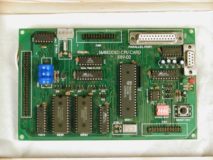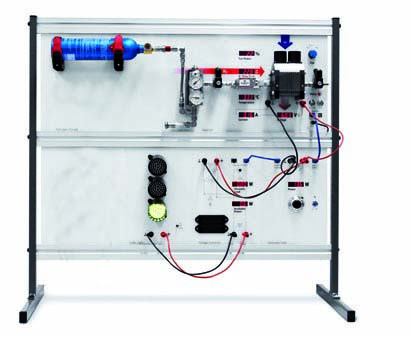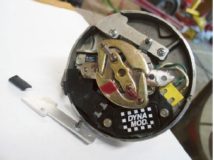Fuel Cell System Model BSG 015
Home » Products » Fuel Cell System Model BSG 015
Fuel Cell System Model BSG 015
Features
- Water-cooled polymer-membrane fuel cell combined heat and power
- Integrated control and monitoring of all operating and safety parameters
- Optionallysoftware for control and data acquisition can be provided
Fuel cells are energy converters that, unlike heat engines, convert chemical energy directly into electrical energy. Heat is generated as a by-product during this process. The main component of Sci-tech Fuel Cell System Model BSG 015 is a polymer-membrane fuel cell which is operated in combined heat and power generation. The system is supplied with high-purity hydrogen from a pressure vessel on the anode side and with oxygen from the ambient air on the cathode side. The fuel cell is operated either current-regulated or voltage-regulated via an integrated electronic load. The setpoint of the electronic load allows a precise adjustment of all operating points and a very accurate recording of characteristics. The technically usable thermal energy is dissipated to the environment via a cooling circuit and can be accounted for via the integrated instrumentation. The water accruing during operation is collected in a water separator. In the fuel cell’s dead-end mode the accruing water is disposed of via a configurable purge valve for hydrogen. The system is operated via a PC. Auxiliary energy for pump, fan and control required for operation is provided from the mains. The moisture in the stack can be regulated via adjustment of the purge valve, so that no external humidification is required. All relevant measuring values are recorded to work out the fuel cell’s energy balance. The measured values are transmitted directly to a PC via USB. Optionally data acquisition software can be provided.
| Size: | 70cm x 40cm x 80cm (LxWxH) |
| Weight: | 35 kg |
Item Description
Features
- Water-cooled polymer-membrane fuel cell combined heat and power
- Integrated control and monitoring of all operating and safety parameters
- Optionally software for control and data acquisition can be provided
Fuel cells are energy converters that, unlike heat engines, convert chemical energy directly into electrical energy. Heat is generated as a by-product during this process.
The main component of Sci-tech Fuel Cell System Model BSG 015 is a polymer-membrane fuel cell which is operated in combined heat and power generation. The system is supplied with high-purity hydrogen from a pressure vessel on the anode side and with oxygen from the ambient air on the cathode side. The fuel cell is operated either current-regulated or voltage-regulated via an integrated electronic load. The setpoint of the electronic load allows a precise adjustment of all operating points and a very accurate recording of characteristics. The technically usable thermal energy is dissipated to the environment via a cooling circuit and can be accounted for via the integrated instrumentation. The water accruing during operation is collected in a water separator. In the fuel cell’s dead-end mode the accruing water is disposed of via a configurable purge valve for hydrogen. The system is operated via a PC.
Auxiliary energy for pump, fan and control required for operation is provided from the mains. The moisture in the stack can be regulated via adjustment of the purge valve, so that no external humidification is required. All relevant measuring values are recorded to work out the fuel cell’s energy balance. The measured values are transmitted directly to a PC via USB. Optionally data acquisition software can be provided.
Technical Specifications
Specifications
- Investigation of a polymer-membrane fuel cell
- Water cooled system in combined heat and power
- Hydrogen supplied via standard pressure vessel
- High-pressure reducing valve for hydrogen pressure vessel supplied
- Oxygen supplies directly from the ambient air
- Precise adjustment of all operating points via electronic load
- Operation without external humidification
- Sensors for flow rate, pressure, temperature, voltage and current strength
- Complete operation and evaluation via ‘Sci-CalR DAQ software on a PC
- Optionallysoftware with control functions and data acquisition via USB under Windows 7
Technical Specifications
Nominal output: 300W Thermal power: approx. 400…500W depending on ambient conditions
Required ambient temperature: 5…35°C
Required inlet pressure: 2…200bar
Measuring ranges
- flow rate:
- 0…0,5L/min (cooling water)
- 0…20sL/min (hydrogen)
- 0…100sL/min (air)
- pressure: 0…500mbar (hydrogen)
- temperature:
- 0…50°C (ambient)
- 0…70°C (stack)
- humidity: 0…100% (ambient)
- voltage: 0…40V (stack)
- current: 0,1…20A (stack)
Experiments:
- Conversion of chemical energy into electrical and thermal energy
- Function and design of a fuel cell system
- Relationships of fuel cell operating parameters
- Effects on the electrical performance of fuel cells
- Recording and visualization of all relevant voltage/current characteristics
- Calculation of relevant variables
Requirements
- Mains Power 220 – 240V @ 50Hz, 1Ph
Model Number
BSG 015
See also different:

A Microcontroller is a type of micro-processor emphasizing high integration, low power consumption, self-sufficiency and cost effectiveness. The microcontroller design integrates additional elements such as Read-write memory for Data storage. [...]



